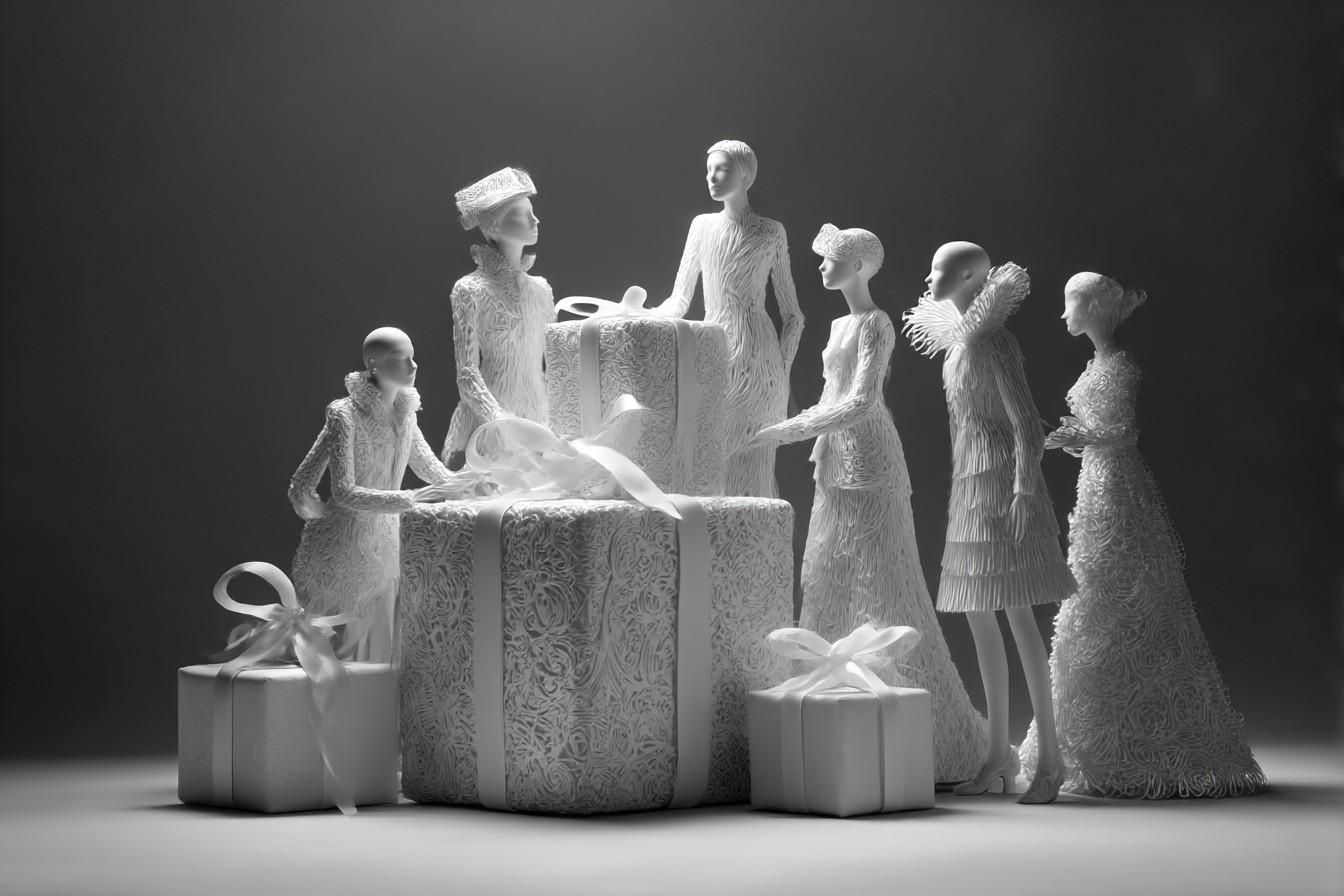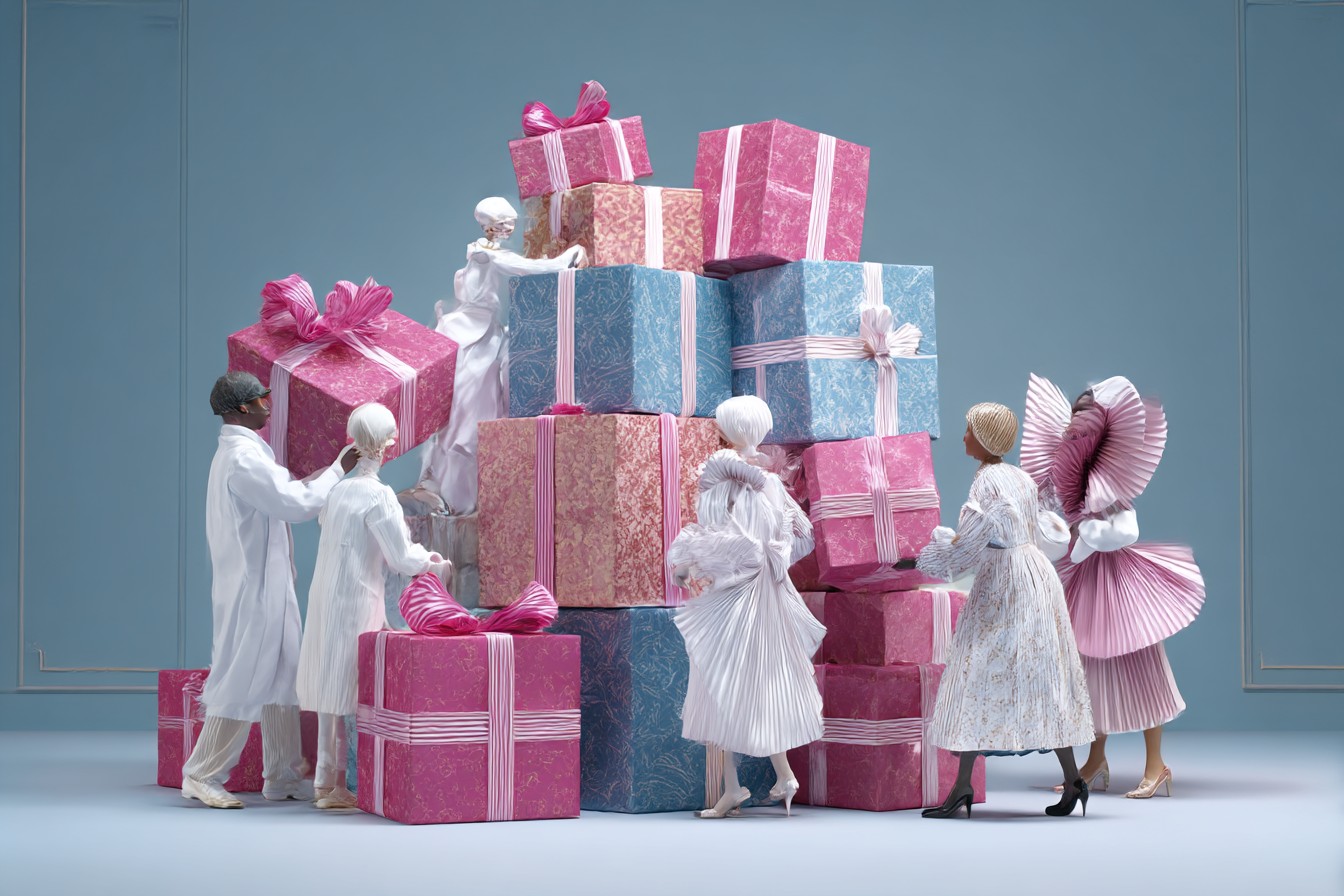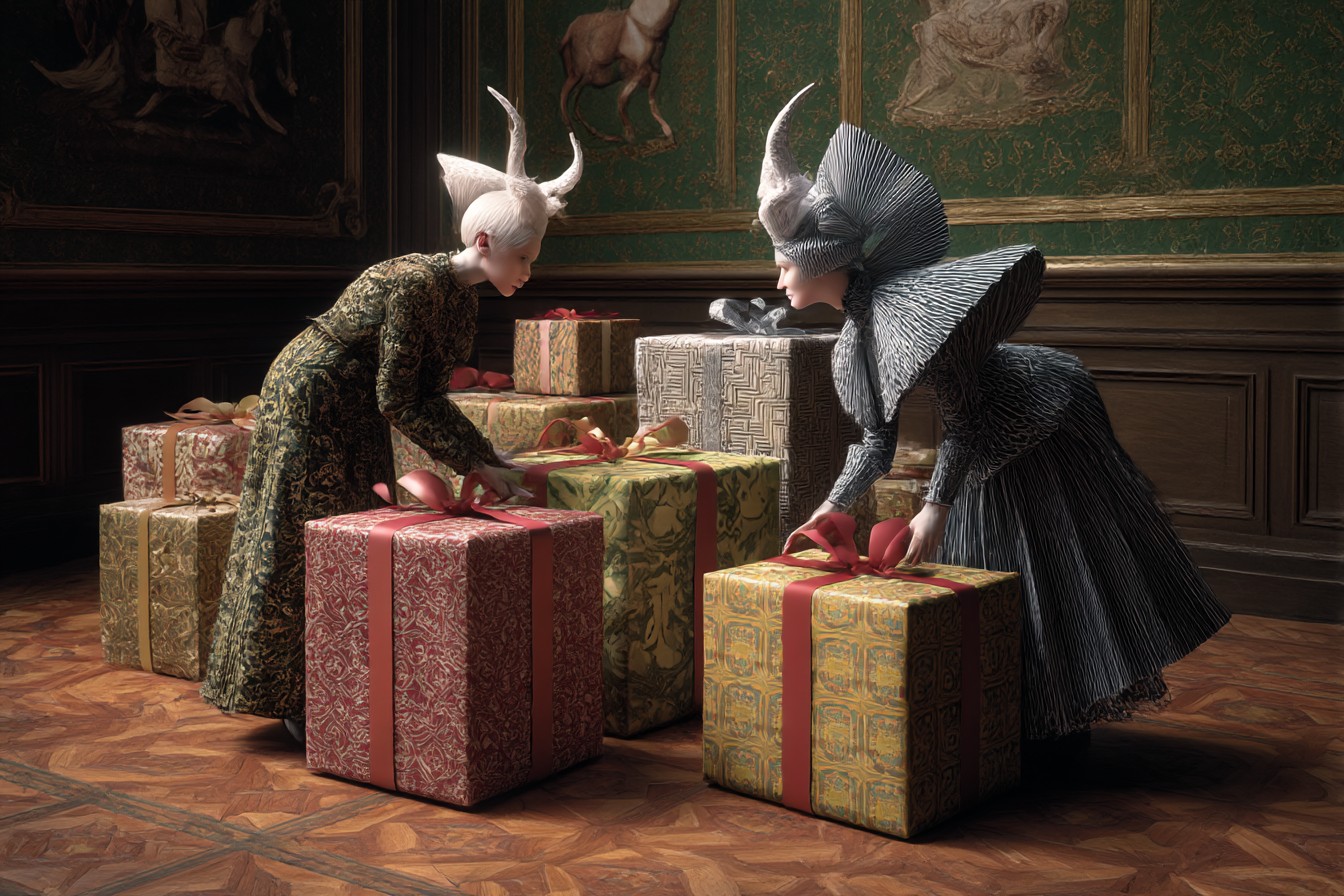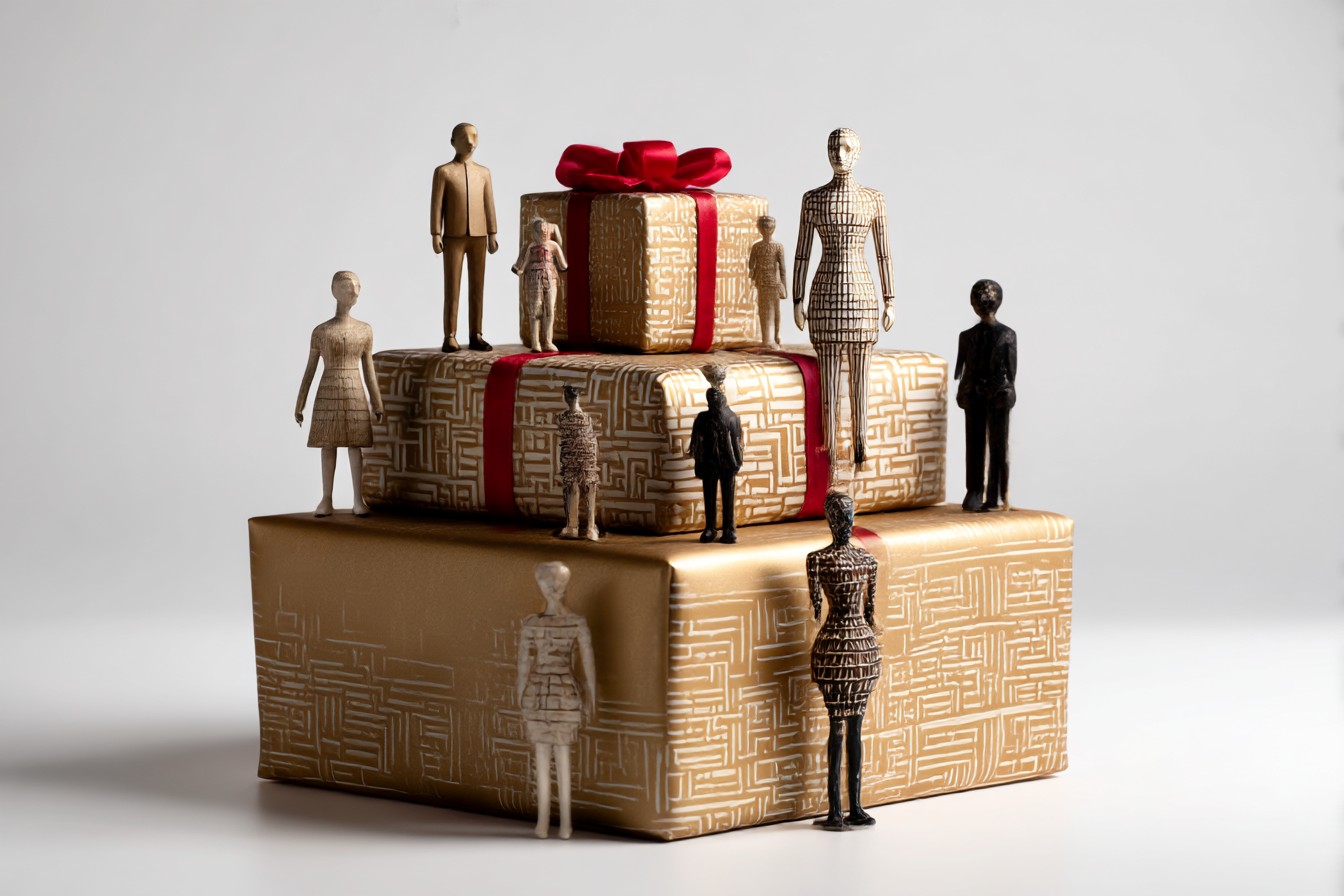The revelation came on a drizzly Tuesday afternoon in November three years ago. I was huddled in a coffee shop near Liverpool Street station, taking shelter from the rain while waiting for my train. Across from me sat my friend Sophie, who was unwrapping the gift I’d brought her—a vintage edition of her favorite childhood book that I’d tracked down through three different specialist booksellers and had rebound in leather with her initials embossed on the cover.
“Emma,” she said, running her fingers over the tooled binding, “this is stunning. You must have spent ages finding it.” I shrugged, pleased but dismissive. “It wasn’t that difficult. Anyway, I knew you’d love it.”
Sophie looked at me for a long moment, then asked a question that would fundamentally reshape my relationship with myself: “When was the last time you put this much thought into something you bought for yourself?”
I opened my mouth to answer, then closed it again. I couldn’t actually remember. Sure, I bought myself things—necessary clothes, books I needed for research, the occasional takeaway when deadline exhaustion hit. But those were functional purchases or stress-relief treats. When had I last approached buying something for myself with the same thoughtfulness, research, and attention to meaning that I routinely invested in gifts for others?
“That’s what I thought,” Sophie said, tucking the book carefully into her bag. “You’d never show up at my birthday with a three-for-two Boots gift set you grabbed on the way, but I bet that’s exactly how you shop for your own bath products.”
She wasn’t wrong. My bathroom cabinet was a graveyard of half-used bottles purchased solely because they were on offer, or because I’d run out of something and grabbed the nearest replacement without a second thought. Meanwhile, I had a spreadsheet detailing Sophie’s preferences in scents (citrus and herb, nothing too floral) and her skin’s specific needs (sensitive, tends to dryness in winter).
The contrast was stark and, quite frankly, a bit embarrassing. Why did I apply such different standards to self-purchases versus gifts for others? The question followed me home on the train, nagging at me as I made my way back to the flat.
That evening, I pulled out my gift journals—the detailed records I’ve kept for years tracking gift successes, preferences, and ideas for everyone in my life. Flipping through them, I realized that while I had pages dedicated to Charlie’s mother (loves gardening but has arthritis; needs lightweight tools and kneeling support) and my friend Priya (collects unusual teapots; prefers functional ones that don’t drip), there wasn’t a single entry about what I might appreciate receiving.
The irony was painful. I, self-proclaimed gift concierge and obsessive recorder of other people’s preferences, had never once directed that same thoughtful attention inward. I treated self-purchases as either utilitarian necessities or impulsive indulgences, with nothing in the meaningful middle ground where the best gifts usually live.
Right then, I made a decision. I would start approaching gifts to myself with the same care, research, and intentionality that I applied to gifts for others. No more grabbing whatever moisturizer was on special offer. No more “it’ll do” purchases for items I use daily. No more saving the “good stuff” for other people while making do with the adequate for myself.
My first experiment with this new philosophy was modest but meaningful. My ancient, fraying dressing gown had been on the mental “should replace someday” list for at least two years. Under my old approach, I would have eventually grabbed whatever was available at M&S when the old one finally disintegrated beyond repair. Instead, I applied my gift-giving methodology to myself.
What did I actually want in a dressing gown? After some reflection, I realized I valued comfort over appearance, preferred natural fabrics that wouldn’t make me overheat, and secretly loved deep pockets where I could stash my phone and a paperback. I wanted something that would last for years, not pills after three washes. And while I didn’t care about the pattern, I did want a color that would make me feel happy first thing in the morning.
Once I’d established these criteria, I researched options with the same thoroughness I’d apply when hunting for Charlie’s birthday present. I read reviews, compared fabrics, and finally settled on a slightly expensive but beautiful waffle-cotton robe in a rich teal that perfectly matched the ceramic mug I use for my morning tea. When it arrived, I didn’t just tear open the packaging and throw it on. I took a moment to appreciate it properly, to recognize that this was a gift to myself, chosen with care.
That dressing gown has been a daily joy for three years now. Every morning when I put it on, I feel a small burst of pleasure—not just from the item itself, but from knowing I chose it specifically to bring myself comfort and happiness. It was a small thing, but it marked the beginning of a profound shift in how I relate to myself as both gift-giver and recipient.
After the dressing gown success, I began applying this methodology more broadly. I created a section in my gift journal titled “For Emma”—a radical act of self-acknowledgment that felt surprisingly emotional. In it, I started recording things I genuinely liked, needs I had, and items or experiences that would meaningfully enhance my life. Not just random wants or superficial desires, but thoughtfully considered gifts that I would choose for myself with the same care I would choose for a beloved friend.
The “For Emma” list quickly revealed patterns I hadn’t consciously recognized. I had a clear preference for experiences over objects. I valued craftsmanship and sustainability. I was drawn to items with stories attached. And perhaps most revealingly, I noticed how often I dismissed my own desires as “unnecessary” or “extravagant” when I would never apply those judgments to a gift for someone else.
This last realization was particularly eye-opening. I would think nothing of spending hours hunting down the perfect fountain pen for my writer friend’s birthday, but would balk at replacing my own worn-out, leaking ballpoints with something I’d genuinely enjoy using. I would carefully select beautiful stationery for others while making do with torn scraps of paper for my own notes. The double standard was glaring once I confronted it directly.
With this awareness, I established some principles for my new approach to self-gifting. First, I would budget for personal gifts with the same priority as gifts for others—not as an afterthought or only when there was “extra” money. Second, I would approach these gifts with deliberate thoughtfulness, not impulsive spending or emotional compensation. And third, I would properly acknowledge and appreciate these gifts to myself, taking the time to enjoy receiving them rather than just acquiring them.
The results have been transformative in unexpected ways. For my birthday last year, instead of waiting to see what others might give me (while secretly hoping for specific things I’d never articulate), I bought myself a letterpress workshop—something I’d wanted to try for years but had always categorized as “maybe someday.” I wrapped the workshop voucher beautifully, wrote myself a card explaining why I thought I’d enjoy it, and opened it alongside the gifts from family and friends. Far from diminishing the other presents, this act of self-gifting enhanced my birthday, adding an element of personal agency and celebration to the occasion.
I’ve also discovered that giving myself permission to receive gifts from myself has made me better at receiving gifts from others. I used to be terribly awkward about accepting presents, deflecting compliments and minimizing the gesture—”Oh, you shouldn’t have” or “This is too much, really.” But when I started honoring my own giving through thoughtful self-gifts, I found it easier to accept that I was worthy of receiving from others too. I became more gracious, more present in the moment of being given to, more able to feel the genuine connection that gift exchange creates.
There have been practical benefits as well. Treating purchases for myself as meaningful gifts rather than functional necessities or impulse buys has actually saved me money. I buy fewer things, but what I do buy is chosen with such care that it brings lasting satisfaction. My “one good umbrella that brings me joy on rainy days” has replaced the trail of cheap ones I used to lose or break every few months. The carefully selected fountain pen with the perfect weight and balance has eliminated the constant stream of disposable ballpoints that always seemed to disappear.
This approach has been particularly valuable for items I use daily. My morning coffee ritual was transformed when I stopped making do with a chipped mug and mismatched equipment, instead gifting myself a beautiful handmade ceramic mug from a potter whose work I’d admired for years, along with a simple but perfect coffee making setup. The coffee itself tastes exactly the same, but the experience of making and drinking it has become a daily moment of appreciation rather than just caffeine intake.
Not all self-gifts need to be tangible, of course. Some of the most meaningful presents I’ve given myself have been experiences or simply permission to prioritize my own joy. A solo afternoon in a museum I’d been wanting to visit. A day off work to do absolutely nothing productive. A proper full stop at the end of a big project instead of immediately rushing on to the next task.
I’ve found that the timing of self-gifts matters too. The conventional occasions—birthdays, Christmas—are obvious moments, but I’ve discovered the power of marking personal milestones that others might not recognize or celebrate. Finishing a challenging work project. Navigating a difficult emotional period. Making progress on a personal goal. These moments deserve acknowledgment, and a thoughtfully chosen self-gift can provide that in a tangible way.
The most unexpected outcome of this experiment has been how it’s affected my relationships. Far from being self-indulgent or narcissistic, treating myself with the same care I show others has actually made me a more present, generous friend and partner. When I’m not subconsciously resentful about my own unmet needs or desires, I have more emotional bandwidth for genuine giving. When I value myself as worthy of thoughtfulness, I bring a more complete self to my relationships.
Charlie noticed the change before I articulated it. “You seem more… settled,” he said one evening, about six months into my self-gifting practice. “Less like you’re running on empty all the time.” He was right. By filling my own cup with the same attentiveness I offered others, I had more to genuinely give. The old airplane safety instruction—secure your own oxygen mask before helping others—turns out to be profound life advice beyond emergency situations.
This isn’t to say I’ve become perfectly balanced in my gift-giving equilibrium. I still sometimes catch myself deferring my own desires while prioritizing others’ needs. I still occasionally fall into the trap of functional purchasing rather than thoughtful selection. But the fundamental shift in perspective remains: I now see myself as deserving the same level of care and consideration that I naturally extend to those I love.
The practice has evolved over time. I now keep a “Gift Ideas for Emma” note in my phone, just as I do for Charlie, my parents, and close friends. When I notice something that resonates—a book that intrigues me, an experience that calls to me, an item that would bring daily pleasure—I add it to the list. Some items stay there for months before I decide whether they’re truly meaningful or just momentary desires. Others get acted on more quickly when I recognize their value to my current life.
I’ve also created small rituals around self-gifts to honor the giving and receiving. I wrap presents to myself properly, with the same care I would use for others. I write myself notes explaining why I chose this particular gift. I take the time to properly appreciate and acknowledge what I’ve received. These may seem like silly, self-conscious acts, but they’ve helped cement the practice as meaningful rather than merely acquisitive.
Perhaps the most profound insight from this experiment has been recognizing that thoughtful giving—whether to others or to oneself—is fundamentally an act of paying attention. When I give a carefully chosen gift to a friend, it says: I see you. I notice what brings you joy. I’ve been paying attention to who you are. Extending that same attentiveness inward has been a powerful form of self-recognition. It says: I see myself. I notice what brings me joy. I’ve been paying attention to who I am.
That drizzly afternoon conversation with Sophie catalyzed a journey that went far beyond upgrading my dressing gown or coffee cup. It invited me to extend to myself the same thoughtfulness, care, and recognition that I’ve always offered others. And in doing so, it’s helped me develop a relationship with myself that feels, finally, like one between dear friends who know each other well—who pay attention to the details, who celebrate the ordinary, and who show love through the simple, profound act of giving gifts that say: I know you, and you matter to me.






Leave a Reply